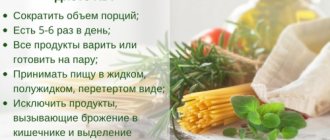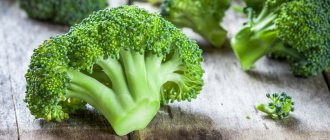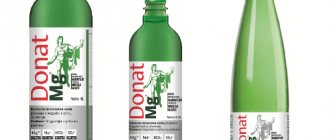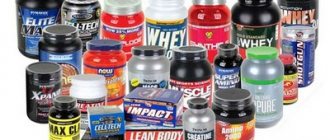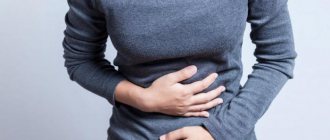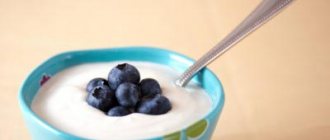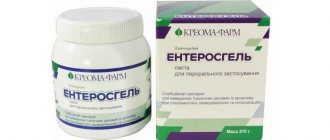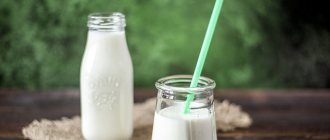General rules
One of the leading places in the structure of the general morbidity of the gastrointestinal tract is occupied by diseases of the stomach, including both diseases of the stomach itself ( gastritis , peptic ulcer ) and combined diseases ( gastroduodenitis , gastroenteritis ). Among the endogenous factors in the development of gastric diseases, special importance is given to the ratio of aggressive factors affecting the gastric mucosa (GMU) - high proteolytic activity / level of acid-forming function and the state of protective elements (nature / degree of mucus formation, blood flow in the GMU, production of prostaglandin / secretory immunoglobulin).
Accordingly, when the balance is disturbed in the direction of reducing protective factors, conditions are created for damage to the coolant and the development of diseases. A special role is given to gastroduodenal motility, which is due to neuropsychic stress. Thus, increased motor activity promotes accelerated evacuation of acidic contents from the stomach into the duodenum and morphological changes in the coolant, and the presence of duodenogastric reflux leads to the reflux of fatty acids into the stomach, damaging the protective mucous barrier. An important role in the development of stomach diseases is played by the infectious agent HP (Helicobacter pylori), since more than 65% of cases of disease are associated with this infection.
Treatment of stomach diseases is aimed at:
- impact on factors of aggression and/or defense;
- eradication of H. pylori in diseases associated with it;
- the use of medications aimed at eliminating dyspeptic and/or “psycho-emotional” symptoms that do not disappear/diminish with basic therapy.
Unlike many other diseases, diet for a sick stomach and intestines is an essential component of a complex treatment process, which largely determines the effectiveness of treatment and the rate of recovery of the patient. Nutrition for stomach disease is aimed, first of all, at providing the patient’s body with energy/plastic needs, adequate sparing of coolant mucus, and correction of metabolic disorders, which is achieved by adequate diet therapy.
The proper nutrition menu for a sick stomach is determined by a number of factors - the type of disease, the degree of damage to the gastric mucosa (inflammation, erosion, atrophy, ulcer), the form/stage of the disease (acute/chronic, exacerbation/remission), the severity of the general condition, the nutritional status of the patient.
The therapeutic diet for diseases of the stomach, depending on the state of the acid-forming function of the stomach, is built within the limits of therapeutic Tables No. 1 ( 1A , 1B ) for normal/high acidity and No. 2 for low acidity. In the stage of stable remission, patients are transferred to general Table No. 16 .
These treatment tables allow you to select dietary nutrition in accordance with all the characteristics of stomach diseases by including/withdrawing (restricting) a number of foods, changing the energy value of the diet and its chemical composition, a set of methods for cooking food, selecting the consistency/temperature of ready-made dishes, and the appropriate regime nutrition.
The diet for the stomach in the acute stage is as gentle as possible (1A, B), which can significantly reduce the impact of unfavorable factors that negatively affect the coolant. A gentle diet involves the exclusion of mechanical/physical and chemical factors that irritate the mucous membrane, adherence to the regimen/principle of fractional nutrition, consumption of ready-made food at the optimal temperature (40-50 C), and thorough chewing.
The degree of sparing is determined by the stage of the disease - exacerbation, unstable/persistent remission. However, these treatment tables are classified as physiologically inferior and cannot be prescribed for a long period. In case of exacerbation of stomach diseases with high/normal acidity, the duration of treatment Table 1A should be on average 6-10 days, 1B - up to two weeks.
The diet includes slimy cereal soups, steamed chicken/fish/curd soufflé, soft-boiled eggs, steamed fish, liquid milk porridges, milk, jelly. Any causative agents of gastric juice secretion and foods that are digestible/irritating to the coolant are excluded, and table salt is limited. The products are boiled/steamed and served in liquid/mushy form.
Diet No. 1 (mashed/non-mashed version) is already physiologically complete with a daily caloric intake of 2800-3000 kcal and can be prescribed for a long period (up to 6 months), especially for chronic, often recurrent stomach diseases. This type of nutrition prepares the stomach well for the transition to a common table.
The diet for stomach diseases occurring against the background of reduced acid-forming function and atrophic processes in the coolant (atrophic gastritis, especially with severe intestinal metaplasia) is based on treatment Table No. 2 .
Such chronic gastric diseases pose a potential danger due to the high risk of dysplasia of the gastric epithelium and the development of cancer/formation of gastric polyps. The main manifestation is dyspepsia (indigestion), manifested by a feeling of heaviness, fullness of the stomach, nausea, belching of air/rotten food.
The diet is physiologically complete and is aimed at moderately stimulating the secretion of gastric juice and reducing fermentation in the intestines. The diet is based on foods that enhance the stimulation of gastric juice: rich first courses in various concentrated broths, porridges in water, salads from boiled vegetables, sauces in meat broths, herring/forshmak, hard cheese, jellied dishes, fermented milk drinks, not pureed ripe fruits. , diluted vegetable/fruit juices, tea with lemon, rosehip decoction, coffee/cocoa, warm mineral still water: “Essentuki” N 4, 17, “Narzan”, “Mirgorodskaya”. Stewing/frying foods without forming a rough crust is allowed.
Products containing coarse fiber (raw vegetables), fatty meats, all types of baked goods, poultry meat, fresh bread, baked goods, okroshka, smoked meats, fatty fish, millet soup, salted/smoked fish, pickled vegetables, some cereals are excluded. (pearl barley, millet, barley, corn), mushrooms, onions, garlic, savory snacks/condiments and spices.
The diet includes products that enhance bile secretion - lemons, virgin vegetable oils, beets/beet juice, fresh garden herbs, and it is also recommended to take bitters of plant origin: wormwood, birch buds, plantain leaves, yarrow. A diet is prescribed for a period of 3-6 months.
Types of stomach pain
The pain of this organ can be mild, of moderate intensity, or cause unbearable suffering. They may occur periodically or be permanent. The type of pain itself also differs: it can be sharp, aching, stabbing, squeezing.
The stomach may hurt when inhaling, walking, or strenuous physical exertion. In each case, the cause of pain is different.
The nature and type of pain helps doctors make an accurate diagnosis.
The reasons that cause pain symptoms in or near this organ are also very diverse. In gastroenterology, pain is divided into two large groups:
1. Pain associated with pathologies of this organ:
- peptic ulcer;
- gastritis;
- food poisoning;
- various infections;
- oncological diseases.
2. Pain associated with other organs, which are usually located near the stomach:
- pathologies of the esophagus;
- pancreatic diseases (pancreatitis);
- liver diseases;
- intestinal pathologies.
This is not a complete list of reasons that can cause stomach pain. The stomach and head can hurt with irritable bowel syndrome, which is also accompanied by bloating and chronic fatigue. With this pathology, there are no structural disturbances in the functioning of the gastrointestinal tract, but the pain is quite severe. Moreover, they are localized precisely in the stomach.
Stomach pain plus diarrhea, vomiting, dizziness and weakness are typical signs of food poisoning.
A feeling of heaviness in the stomach and pain in it are signs of a lack of gastric juice secreted by the organ.
Acute gastritis is characterized by pain after eating, as well as rotten belching, vomiting and diarrhea. Pain and severe heartburn are a sign of a peptic ulcer, and pain on an empty stomach are symptoms of an exacerbation of a peptic ulcer or inflammation of the duodenum.
Women often experience stomach pain during pregnancy and before menstruation. Pain is associated with changes in the functioning of the endocrine system that occur during these periods. There are other diseases that cause similar symptoms, they may be related to the functioning of other body systems.
In order to properly create a diet for pain in this organ, you should understand the reason that causes it.
Authorized Products
The diet for stomach diseases should consist of:
- Broths/soups prepared in recycled meat/fish/vegetable broth with the addition of mashed/boiled cereals and vegetables (pumpkin, beets, potatoes, cauliflower, zucchini, carrots, young fresh peas), seasoned with egg-milk mixture/butter. During periods of exacerbation of diseases, pureed/creamy pureed soups are recommended, which are less irritating to the coolant.
- Lean varieties of red meat (veal/beef, chicken, turkey, rabbit, boiled/steamed). To reduce the stimulating effect of extractive substances, it is recommended to first boil meat/fish products and then stew/bake them.
- Fresh butter/vegetable oil, sour cream and cream sauces.
- Low-fat boiled/steamed sea and river fish (cod, pike perch, carp, pollock, sea fish fillet, hake) in pieces and minced products.
- Boiled, stewed, thoroughly pureed/chopped vegetables (cauliflower inflorescences, beets, pumpkin, garden herbs, kohlrabi, potatoes, green young peas, tomatoes without skins).
- Cereal well-cooked dishes (outside the period of exacerbation).
- Low-fat milk/dairy products, cottage cheese in its natural form and dishes made from it (baked cheesecakes, casseroles, puddings).
- Non-acidic fruits/berries, in the form of compotes, jellies, jelly. You can eat baked apples in small quantities.
- Dried white bread/flour products.
- Desserts - cottage cheese casserole with prunes, apricot jelly, semolina pudding with apples/pumpkin, mashed potatoes, fruit jelly.
- Spices that do not irritate the mucous membranes: garden herbs, bay leaf, cumin.
- Drinks include rosehip infusion and vegetable/fruit juices, mineral water, herbal teas.
Table of permitted products
| Proteins, g | Fats, g | Carbohydrates, g | Calories, kcal | |
Vegetables and greens | ||||
| zucchini | 0,6 | 0,3 | 4,6 | 24 |
| cauliflower | 2,5 | 0,3 | 5,4 | 30 |
| potato | 2,0 | 0,4 | 18,1 | 80 |
| carrot | 1,3 | 0,1 | 6,9 | 32 |
| parsley | 3,7 | 0,4 | 7,6 | 47 |
| beet | 1,5 | 0,1 | 8,8 | 40 |
| dill | 2,5 | 0,5 | 6,3 | 38 |
Fruits | ||||
| quince | 0,6 | 0,5 | 9,8 | 40 |
| pomegranate | 0,9 | 0,0 | 13,9 | 52 |
| pears | 0,4 | 0,3 | 10,9 | 42 |
| dogwood | 1,0 | 0,0 | 10,5 | 44 |
| apples | 0,4 | 0,4 | 9,8 | 47 |
Berries | ||||
| blueberry | 1,1 | 0,4 | 7,6 | 44 |
Nuts and dried fruits | ||||
| dried pears | 2,3 | 0,6 | 62,6 | 249 |
Cereals and porridges | ||||
| buckwheat (kernel) | 12,6 | 3,3 | 62,1 | 313 |
| semolina | 10,3 | 1,0 | 73,3 | 328 |
| oat groats | 12,3 | 6,1 | 59,5 | 342 |
| cereals | 11,9 | 7,2 | 69,3 | 366 |
| white rice | 6,7 | 0,7 | 78,9 | 344 |
Flour and pasta | ||||
| pasta | 10,4 | 1,1 | 69,7 | 337 |
| milk pasta | 11,5 | 2,9 | 67,1 | 345 |
| noodles | 12,0 | 3,7 | 60,1 | 322 |
Bakery products | ||||
| white bread crackers | 11,2 | 1,4 | 72,2 | 331 |
Confectionery | ||||
| jam | 0,3 | 0,2 | 63,0 | 263 |
| jam | 0,3 | 0,1 | 56,0 | 238 |
| marshmallows | 0,8 | 0,0 | 78,5 | 304 |
| fruit and berry marmalade | 0,4 | 0,0 | 76,6 | 293 |
| meringues | 2,6 | 20,8 | 60,5 | 440 |
| paste | 0,5 | 0,0 | 80,8 | 310 |
Raw materials and seasonings | ||||
| milk sauce | 2,0 | 7,1 | 5,2 | 84 |
| dried bird cherry | 8,4 | 0,0 | 16,8 | 101 |
Dairy | ||||
| skim milk | 2,0 | 0,1 | 4,8 | 31 |
| sour cream | 2,8 | 20,0 | 3,2 | 206 |
| acidophilus | 2,8 | 3,2 | 3,8 | 57 |
Cheeses and cottage cheese | ||||
| cheese | 24,1 | 29,5 | 0,3 | 363 |
| cottage cheese 0.6% (low fat) | 18,0 | 0,6 | 1,8 | 88 |
Meat products | ||||
| boiled beef | 25,8 | 16,8 | 0,0 | 254 |
| beef liver | 17,4 | 3,1 | 0,0 | 98 |
| boiled beef tongue | 23,9 | 15,0 | 0,0 | 231 |
| boiled veal | 30,7 | 0,9 | 0,0 | 131 |
| rabbit | 21,0 | 8,0 | 0,0 | 156 |
Bird | ||||
| boiled chicken | 25,2 | 7,4 | 0,0 | 170 |
| turkey | 19,2 | 0,7 | 0,0 | 84 |
Eggs | ||||
| chicken eggs | 12,7 | 10,9 | 0,7 | 157 |
Fish and seafood | ||||
| Red caviar | 32,0 | 15,0 | 0,0 | 263 |
| black caviar | 28,0 | 9,7 | 0,0 | 203 |
Oils and fats | ||||
| butter | 0,5 | 82,5 | 0,8 | 748 |
| ghee | 0,2 | 99,0 | 0,0 | 892 |
Non-alcoholic drinks | ||||
| mineral water | 0,0 | 0,0 | 0,0 | — |
| green tea | 0,0 | 0,0 | 0,0 | — |
| black tea | 20,0 | 5,1 | 6,9 | 152 |
Juices and compotes | ||||
| carrot juice | 1,1 | 0,1 | 6,4 | 28 |
| pumpkin juice | 0,0 | 0,0 | 9,0 | 38 |
| Apple juice | 0,4 | 0,4 | 9,8 | 42 |
| * data is per 100 g of product | ||||
What can you eat if you have acute pancreatitis?
In case of severe pain in the stomach and pancreas, which was provoked by acute pancreatitis, people must follow a therapeutic diet, which provides for the following rules:
- For the first few days after an attack, patients are prohibited from eating or drinking liquids. At this time, all the necessary nutrients are supplied to them through intravenous solutions.
- From the fourth day, patients are allowed to drink water, after which they are gradually transferred to liquid food. You can start ending your hunger strike with light, mucous soups, for example, vermicelli or rice. After this, you can introduce vegetable and mashed potatoes and grated porridge into your diet.
- All products that contain fiber (coarse) and extractive microelements are excluded from the patient’s daily diet.
- In order to quickly remove toxins and residual medications from the patient’s body, he needs to drink as much fluid as possible (at least a liter of clean water).
- To normalize the digestive process, it is recommended to use jelly (thin), cooked from berries or fruits.
- Rose hip decoction will help relieve inflammation in this category of patients.
- It is prohibited to drink coffee at any stage of the diet. It should be replaced with weak tea, to which a small amount of milk is added (sugar is excluded).
- After the attack has passed, the patient’s menu will gradually expand and he can eat egg white omelet, milk porridge (liquid), low-fat cottage cheese and cow’s milk, steamed fish and meat.
- At the time of discharge from the hospital, the patient is completely transferred to diet table No. 5, which he must follow until the inflammatory process and pain in the pancreas are completely relieved.
Fully or partially limited products
The diet for stomach diseases with normal/high acidity should exclude/limit:
- Fast food products/semi-finished products.
- Soups with fried dressing, first courses with the addition of onions, legumes, onion soup, kidneys, cabbage, millet. All soups are made with meat/fish/mushroom broths.
- Stringy/fatty/salted and fried meat, fish, smoked meats, fried potatoes, lard, pancakes, goose, duck, pancakes, fried donuts, canned fish.
- Meat, mushroom, fish, onion, garlic, mayonnaise-based sauces.
- Bean dishes, millet, wheat, corn, pearl barley, barley porridge. Difficult-to-digest foods (mushrooms), vegetables with coarse fiber (radishes), irritating coolants (ginger, garlic, green onions, pickled vegetables), hot spices/seasonings.
- Ice cream, chocolate, nut and raisin casseroles, sweet nut buns.
- Some fruits (grapes, figs, pears, lingonberries, raspberries, blueberries).
- Fatty fermented milk drinks, sour cottage cheese, fatty cheese.
Table of prohibited products
| Proteins, g | Fats, g | Carbohydrates, g | Calories, kcal | |
Vegetables and greens | ||||
| vegetables legumes | 9,1 | 1,6 | 27,0 | 168 |
| swede | 1,2 | 0,1 | 7,7 | 37 |
| cabbage | 1,8 | 0,1 | 4,7 | 27 |
| sauerkraut | 1,8 | 0,1 | 4,4 | 19 |
| green onion | 1,3 | 0,0 | 4,6 | 19 |
| bulb onions | 1,4 | 0,0 | 10,4 | 41 |
| cucumbers | 0,8 | 0,1 | 2,8 | 15 |
| canned cucumbers | 2,8 | 0,0 | 1,3 | 16 |
| parsnip | 1,4 | 0,5 | 9,2 | 47 |
| parsley (root) | 1,5 | 0,6 | 10,1 | 49 |
| radish | 1,2 | 0,1 | 3,4 | 19 |
| white radish | 1,4 | 0,0 | 4,1 | 21 |
| turnip | 1,5 | 0,1 | 6,2 | 30 |
| celery | 0,9 | 0,1 | 2,1 | 12 |
| canned tomatoes | 1,1 | 0,1 | 3,5 | 20 |
| green beans | 2,8 | 0,4 | 8,4 | 47 |
| horseradish | 3,2 | 0,4 | 10,5 | 56 |
| garlic | 6,5 | 0,5 | 29,9 | 143 |
| spinach | 2,9 | 0,3 | 2,0 | 22 |
| sorrel | 1,5 | 0,3 | 2,9 | 19 |
Fruits | ||||
| bananas | 1,5 | 0,2 | 21,8 | 95 |
| melon | 0,6 | 0,3 | 7,4 | 33 |
Berries | ||||
| grape | 0,6 | 0,2 | 16,8 | 65 |
Mushrooms | ||||
| mushrooms | 3,5 | 2,0 | 2,5 | 30 |
Cereals and porridges | ||||
| corn grits | 8,3 | 1,2 | 75,0 | 337 |
| pearl barley | 9,3 | 1,1 | 73,7 | 320 |
| Wheat groats | 11,5 | 1,3 | 62,0 | 316 |
| millet cereal | 11,5 | 3,3 | 69,3 | 348 |
| barley grits | 10,4 | 1,3 | 66,3 | 324 |
Bakery products | ||||
| vysivkovy bread | 9,0 | 2,2 | 36,0 | 217 |
| Old Russian grain bread | 9,6 | 2,7 | 47,1 | 252 |
| Rye bread | 6,6 | 1,2 | 34,2 | 165 |
Confectionery | ||||
| candies | 4,3 | 19,8 | 67,5 | 453 |
| pastry cream | 0,2 | 26,0 | 16,5 | 300 |
| cookie | 7,5 | 11,8 | 74,9 | 417 |
| butter cookies | 10,4 | 5,2 | 76,8 | 458 |
Ice cream | ||||
| ice cream | 3,7 | 6,9 | 22,1 | 189 |
Cakes | ||||
| cake | 4,4 | 23,4 | 45,2 | 407 |
Chocolate | ||||
| chocolate | 5,4 | 35,3 | 56,5 | 544 |
Raw materials and seasonings | ||||
| seasonings | 7,0 | 1,9 | 26,0 | 149 |
| mustard | 5,7 | 6,4 | 22,0 | 162 |
| ginger | 1,8 | 0,8 | 15,8 | 80 |
| ketchup | 1,8 | 1,0 | 22,2 | 93 |
| mayonnaise | 2,4 | 67,0 | 3,9 | 627 |
| ground black pepper | 10,4 | 3,3 | 38,7 | 251 |
| chilli | 2,0 | 0,2 | 9,5 | 40 |
Meat products | ||||
| pork | 16,0 | 21,6 | 0,0 | 259 |
| salo | 2,4 | 89,0 | 0,0 | 797 |
Sausages | ||||
| dry-cured sausage | 24,1 | 38,3 | 1,0 | 455 |
| sausages | 12,3 | 25,3 | 0,0 | 277 |
Bird | ||||
| duck | 16,5 | 61,2 | 0,0 | 346 |
| goose | 16,1 | 33,3 | 0,0 | 364 |
Fish and seafood | ||||
| dried fish | 17,5 | 4,6 | 0,0 | 139 |
| smoked fish | 26,8 | 9,9 | 0,0 | 196 |
| canned fish | 17,5 | 2,0 | 0,0 | 88 |
Oils and fats | ||||
| animal fat | 0,0 | 99,7 | 0,0 | 897 |
| cooking fat | 0,0 | 99,7 | 0,0 | 897 |
Alcoholic drinks | ||||
| white dessert wine 16% | 0,5 | 0,0 | 16,0 | 153 |
| vodka | 0,0 | 0,0 | 0,1 | 235 |
| cognac | 0,0 | 0,0 | 0,1 | 239 |
| beer | 0,3 | 0,0 | 4,6 | 42 |
Non-alcoholic drinks | ||||
| bread kvass | 0,2 | 0,0 | 5,2 | 27 |
| cola | 0,0 | 0,0 | 10,4 | 42 |
| sprite | 0,1 | 0,0 | 7,0 | 29 |
| tonic | 0,0 | 0,0 | 8,3 | 34 |
| energy drink | 0,0 | 0,0 | 11,3 | 45 |
Juices and compotes | ||||
| Orange juice | 0,9 | 0,2 | 8,1 | 36 |
| grape juice | 0,3 | 0,0 | 14,0 | 54 |
| Cherry juice | 0,7 | 0,0 | 10,2 | 47 |
| Strawberry juice | 0,6 | 0,4 | 7,0 | 31 |
| tangerine juice | 0,8 | 0,3 | 8,1 | 36 |
| tomato juice | 1,1 | 0,2 | 3,8 | 21 |
| * data is per 100 g of product | ||||
Menu (power mode)
There is no universal menu for stomach diseases, as such, since the principles of nutrition and the degree of coolant sparing at different stages of the disease vary significantly. However, it is important to consider that dietary nutrition does not mean a lack of variety in the menu. Psychological dissatisfaction with tasteless food and a limited diet can cause aggravation, since the psychological state has a direct impact on the physical.
There are various dietary recipes, ranging from simple to complex gastronomic delights. The main condition for tasty dishes is that they should not be overcooked. And if during the period of exacerbation the diet is quite poor, then during the period of remission the patient should receive tasty and varied dishes.
Goat milk
Is it possible to consume goat's milk if you have gastritis? Many people call this product the “elixir of life.” But not everyone will like its taste. This milk has a tart taste and high fat content. It does not contain the enzyme lipase, which breaks down fats. Therefore, it is useful to use it.
Goat milk is even used in the treatment of stomach diseases. Its composition has some similarities with cow's. But this milk contains much more protein, fat and calcium. The downside is its low heat resistance caused by the high calcium content. This milk is better absorbed by the human body, which is facilitated by a large amount of albumin. Goat's milk for gastritis with high acidity relieves pain in patients, reduces the feeling of nausea and aversion to food. Many doctors recommend taking this because it contains a substance called lysozyme. The latter has a wound-healing effect.
But you should drink this milk very carefully, since many people are intolerant to this product. It is recommended to start with small doses and gradually increase them.
When consuming milk for gastritis, you need to be aware that it contains lactose. In this regard, people with intolerance to this product should exclude milk from their diet. People who have problems with the liver and pancreas should also avoid using it.
Advantages and disadvantages
| pros | Minuses |
|
|
Reviews and results
Therapeutic nutrition for stomach diseases is extremely important for patients and, according to numerous reviews, helps to quickly relieve symptoms. Basic diets for gastroenterological patients are physiologically complete and suitable for long-term use.
- “... Chronic gastritis for 15 years. Sometimes it seems that I was born with it. Exacerbation 1-2 times a year. Of course, I immediately switch to diet food for about a month. I cook for myself, mostly in a slow cooker, sometimes I bake it in the oven. When there is no exacerbation, I switch to my usual diet, although I limit alcohol, especially beer, smoked meats, and spicy foods”;
- “...I checked my stomach. Gastroscopy revealed antral gastritis, low acidity, and Heliobacter was detected. She underwent eridification treatment and was prescribed a diet and medication. Now I understand how wrong I was eating, I ate a lot of spicy, fried, smoked foods, and often ate dry food. Now I’ve decided to normalize my diet and bring my stomach back to normal.”
Diet for pain in the stomach and pancreas: sample menu for a week
It is impossible to imagine treatment of the gastrointestinal tract without correcting the diet. A well-designed menu that takes into account the causes of pathological changes will allow you to cope with unpleasant symptoms, including severe pain, in the shortest possible time. Despite the high effectiveness of a therapeutic diet, drug therapy cannot be avoided, therefore, if signs of a digestive disorder develop, the help of a gastroenterologist is required.


